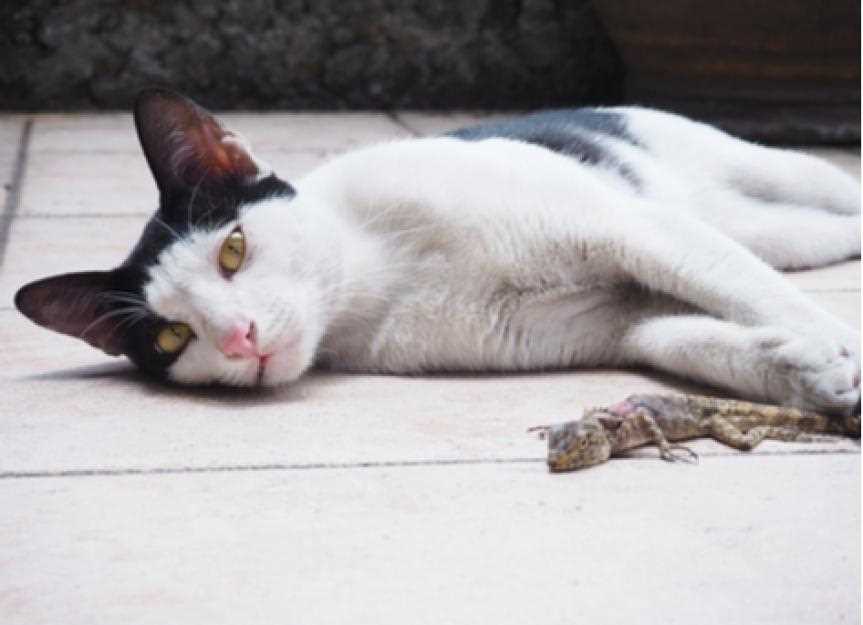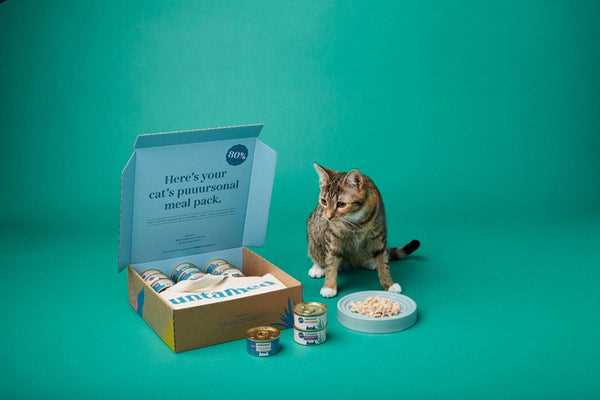
Cats have a strong instinct to hunt and chase small animals, including frogs. However, it’s essential to note that not all frogs are safe for cats to eat. Some species of frogs can secrete toxins or carry parasites that can be harmful or even fatal to cats.
If your cat manages to catch a frog, it’s best to intervene and prevent them from eating it until you can confirm whether the frog is safe. Contact your veterinarian immediately if you suspect your cat has ingested a toxic or potentially harmful frog.
Potential risks
Frogs can pose a danger to cats because they secrete toxins through their skin. These toxins can be harmful or even deadly if ingested by your cat. The severity of the toxicity depends on the species of frog and the amount consumed by the cat.
It is also worth noting that cats can be more susceptible to the toxins produced by frogs due to their smaller size and sensitive digestive systems. Therefore, even a small amount of toxins can have a significant impact on their health.
To prevent the risks associated with cats eating frogs, it is best to keep your feline companion away from areas where frogs are commonly found. This can include ponds, swamps, or any other natural habitat for frogs.
Additionally, if you live in an area with a high population of toxic frogs, it may be wise to keep your cat indoors to avoid any potential encounters.
Common symptoms of frog poisoning in cats
1. Vomiting and diarrhea
2. Drooling and foaming at the mouth
3. Difficulty breathing
In more severe cases, frog poisoning can lead to difficulty breathing. This can be a potentially life-threatening symptom and should not be ignored. If your cat is struggling to breathe or showing signs of respiratory distress after being exposed to a frog, it’s crucial to seek immediate veterinary care.
4. Lethargy and weakness
Frog poisoning can also cause lethargy and weakness in cats. If your cat seems unusually tired, weak, or lacks energy after encountering a frog, it’s essential to monitor their condition closely. These symptoms can indicate that the toxins from the frog are affecting their overall well-being.
5. Irregular heartbeat or seizures
In severe cases, frog poisoning can lead to more serious symptoms such as an irregular heartbeat or seizures. If you notice any abnormal behavior or suspect that your cat may have ingested a toxic frog, it’s critical to contact your veterinarian immediately for guidance.
How to keep your cat safe from frogs
- Supervise outdoor activities: Keep an eye on your cat when they are outside, especially if it’s near a water source or a frog habitat. This will allow you to intervene if your cat shows interest in catching or eating a frog.
- Keep your yard clean: Remove any potential hiding spots for frogs in your yard, such as piles of leaves or rocks. By eliminating these hiding places, you can reduce the likelihood of frogs being present in your immediate surroundings.
- Train your cat: Teaching your cat the “leave it” command can be useful in preventing them from approaching or attempting to eat a frog. Consistent training and positive reinforcement can help reinforce this behavior.
- Use deterrents: Consider using pet-safe deterrents, such as motion-activated sprinklers or frog repellent sprays, to discourage frogs from entering your yard or garden. However, make sure these deterrents are safe for both your cat and the environment.
- Know the signs of frog poisoning: Familiarize yourself with the common symptoms of frog poisoning in cats, such as excessive salivation, vomiting, diarrhea, or seizures. If you notice any of these signs, seek immediate veterinary care.
By following these preventive measures, you can reduce the risk of your cat coming into contact with toxic frogs and ensure their safety. Remember, the well-being of your feline companion should always be a top priority.
What to do if your cat eats a frog

-
Observe your cat’s behavior
After your cat has ingested a frog, carefully observe their behavior for any unusual signs or symptoms. These may include vomiting, drooling, difficulty breathing, or lethargy.
-
Check for any visible signs of poisoning
If you notice any visible signs of poisoning, such as redness or swelling around the mouth or throat, it is crucial to seek immediate veterinary assistance.
-
Contact your veterinarian

If your cat appears to be experiencing any symptoms or if you’re unsure of how the frog may have affected them, it is best to contact your veterinarian for guidance. They will be able to provide specific advice based on your cat’s individual situation.
-
Bring the frog with you to the veterinarian
If possible, try to bring the frog that your cat ingested along with you when you visit the vet. This can help them identify the specific species of frog and determine the potential toxicity.
-
Follow your veterinarian’s instructions
Your veterinarian will provide you with professional advice on how to proceed. They may recommend inducing vomiting in your cat or administering specific treatments to counteract any potential poisoning.
-
Keep your cat comfortable
While waiting for veterinary assistance, keep your cat calm and comfortable. Try to limit their activity and provide a quiet, stress-free environment. Offer them water to drink but avoid providing any food unless specifically advised by your veterinarian.
-
Prevent future incidents
To prevent your cat from eating frogs in the future, make sure to keep them indoors or supervise them closely when they are outside. You can also consider installing a fence or using deterrents to keep frogs away from your yard.
Types of frogs that are toxic to cats

1. Poison Dart Frogs
2. Cane Toads
3. Fire-Bellied Toads
Fire-bellied toads are small, brightly colored frogs native to parts of Europe and Asia. These frogs have bright red or orange bellies, which they display as a warning to predators. While their toxic secretions are not usually lethal to cats, they can cause discomfort and sickness if ingested.
Precautions to take in frog-prone areas
1. Supervise outdoor activities: When your cat is outside, make sure to keep a close eye on them, especially if you know there are frogs in the area. Cats are natural hunters and may be tempted to chase and catch frogs.
2. Clear your yard: Keep your yard clean and free of clutter, especially areas where frogs may hide, such as piles of leaves or wood. This reduces the chance of your cat encountering a frog.
3. Use fencing: If your cat has access to a backyard, consider installing a cat-proof fence to prevent them from roaming into areas with a higher frog population.
4. Educate yourself: Learn about the types of frogs that are toxic to cats and their habitats. This knowledge will help you identify potentially dangerous situations and take appropriate action.
5. Consider using cat deterrents: There are various cat deterrent products available in the market, such as ultrasonic devices or motion-activated sprinklers, which can help keep frogs away from your yard.
6. Consult with your veterinarian: If you live in an area where frogs are a known hazard, it’s a good idea to discuss it with your veterinarian. They can provide further guidance and recommend any additional precautions specific to your location.
Other Potential Hazards for Cats
Human Medications: Medications that are safe for humans can be extremely dangerous for cats. Keep all medications securely stored in cabinets or drawers that your cat cannot access. If you suspect that your cat has ingested any medication, contact your veterinarian immediately.
Household Chemicals: Household chemicals such as cleaning products, insecticides, and automotive fluids can be toxic to cats. Ensure that these substances are stored in secure cabinets or areas that are not accessible to your cat.
String and Small Objects: Cats are often attracted to string and small objects, which can be dangerous if ingested. Keep these items out of reach of your cat to prevent choking or gastrointestinal obstruction.
Uncooked Meat and Bones: Feeding your cat raw meat or bones can be hazardous. Raw meat can contain bacteria such as salmonella, and bones can splinter and cause choking or internal injuries. Stick to a balanced and properly cooked diet for your cat.
| Summary | |
|---|---|

I’m Lena Adams—a product of an unconventional upbringing in the African wilderness. My father, a daring explorer of African wildlife, sparked my fascination with reptiles, a passion that intertwined with the tragic loss of my mother during an expedition, leaving an indelible mark on my life. Driven to understand the creatures that captivated my parents, I embarked on my journey, sharing insights about reptiles, frogs, and lizards on my website. Through my explorations and conservation efforts, I honour my family’s legacy while seeking connections—to the creatures, nature, and the mother whose presence I yearn to understand.
